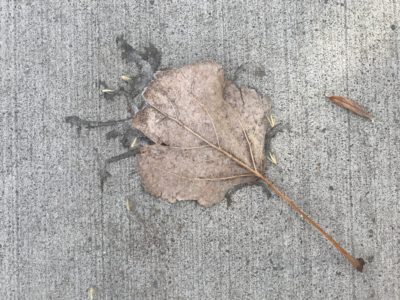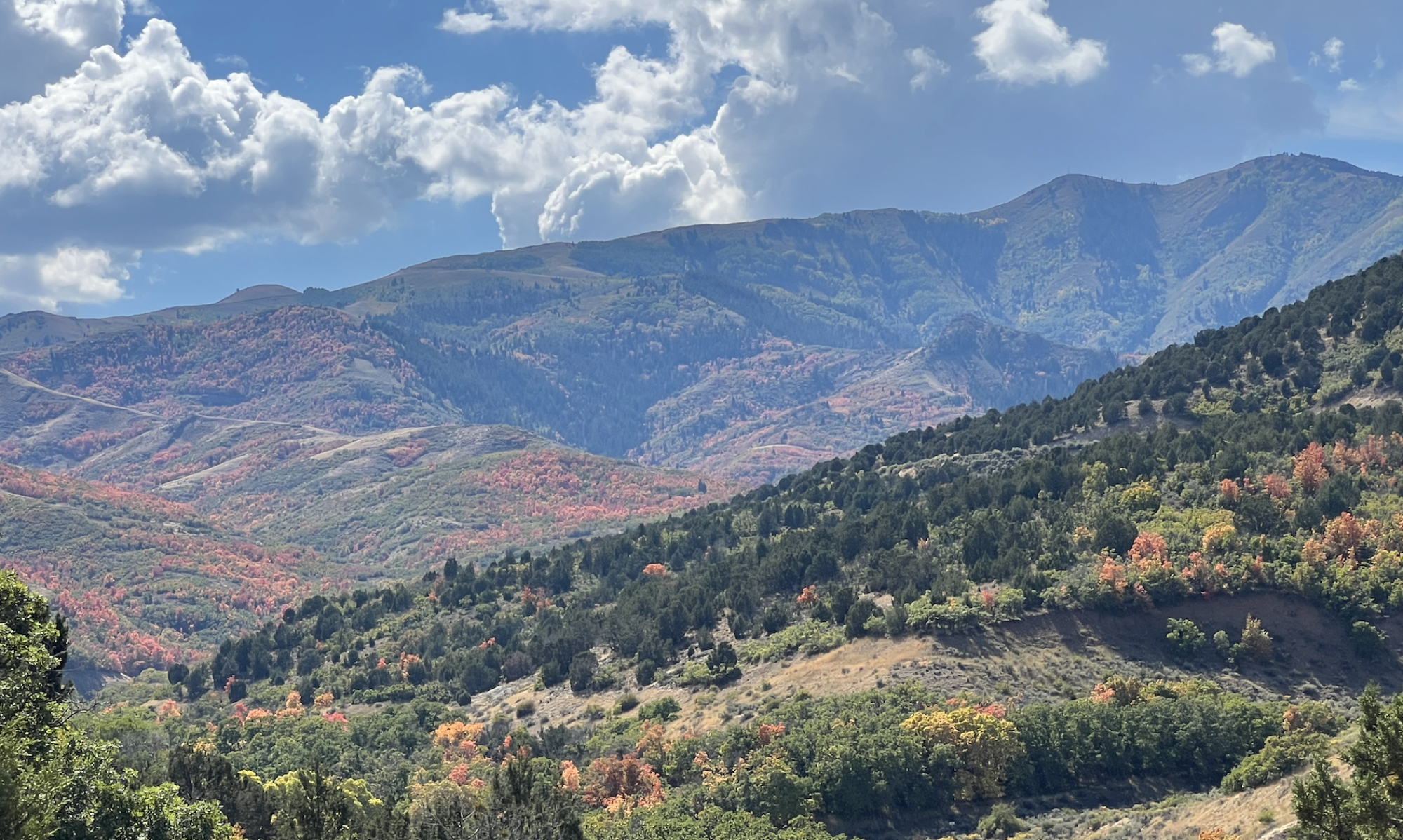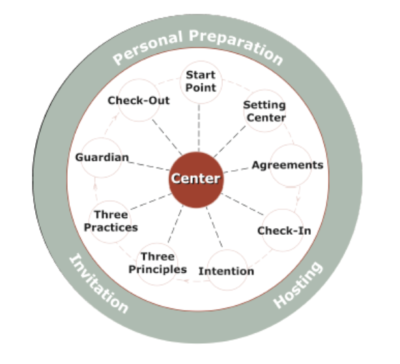
“The origin of Open Space Technology,” Harrison Owen says yesterday on Beehive Production’s Founder Series, “is 13.7 billion years ago. Open Space is about creating life and being part of life’s natural unfolding.”
I so loved participating with a group of 75 or so, mostly listening to Harrison tell stories of what was happening as he was helping to craft what is widely used today, and known as the process methodology, Open Space Technology.
At the heart of it is a premise of self-organizing capacity. We humans can tap into that. Or trust that natural force, just like we might trust gravity. It’s happening anyway, whether we plan for it or not. Just like the ordering from the overnight freeze in the photo I harvested above — I’ve been so taken by this self-organized art. It’s not like the ice elves come overnight, have a meeting, and then leave patterned design on the sidewalk after pulling an overnighter. That art happens naturally. Pattern happens naturally.
That’s encouraging.
Here’s a few of the headlines that I loved in Harrison’s sharing and in Chris Corrigan’s prompting of a few questions (I think Beehive will be posting soon for free sharing):

- lived life as an unrolling ball — at 84 now, Harrison looks back on his life as something that unrolled, or unfolded. It was less planned and always adapting
- interest in chaos and order and the creative process; using OS to create life — I love what this names as already inherent. Chaos and order are natural. They dance with each other. And they create life. Ah, to think of the group process OST that is really about giving ourselves to what is already wanting to happen.
- people knew each other but never had a chance to talk to each other — I love the “why” of this, that feels so true in most organizations. There are good people that just don’t have structure, habit, or rhythm for connection, The very thing that sustains us is often stripped from operational premise, and often stripped in the name of efficiencies. There’s a ludicrousness in that. I love Harrison’s most basic question. 1) What issues are biting you now + five years out? And then the imperative and invitation, “Do something useful.”
- organizational transformation was a 2-beer idea — it was a desire to hold a conference on something that was attractive in idea to most, but nobody knew what it meant. It was desire to hold a learning gathering that had the energy of connection and the simplicity of structure that didn’t require a year of planning and budget. OST is what you do to put people to work, knowing that a layer of work is about creating and encouraging the connection.
- we are the stories we tell — we just need to get a sense of the spirit of things, perhaps by asking two questions: 1) who are you (discloses the mythology of the place), and 2) how did you get here?
- origin of OS — yup, at one level it is 13.7 billion years ago, with the appearance of self-organization. Harrison goes on about the impact of OST. “From the sitting around of participants to serious creativity. From conflict to hugging and kissing (even with Israeli and Palestinian leaders who are trying to kill each other). The other version of creation, socially, is from 1985 when Harrison didn’t have a full year of time or absence of pay to organize a conference. His basics are gold. 1) when people have something to say, get in circle. 2) create a bulletin board. 3) get to work (and do one thing less that people can do for themselves, or in other words — trust self-organization, rely on human goodness, and depend on diversity)
- the business of business is learning — this is one of the best “what if” questions I know. Definitely true beyond business too. What if the business of community were learning? Or of family? Or of organizations? This takes me back to my grandmother, who had similar orientation. She was always about being curious and learning as fabric for community
- next is to organize a meaningful conversation for 8 billion people — this was Harrison’s peek to the possibility of now. He named the many amplified settings. “Climate change. Polarization. Trump trumping. Economic disparity. Fires burning…”
It was great to be a participant. It was great to return to origins and founders, Harrison in this case, of a process that I use all of the time and has become central to the way that I work with people to help them work with life itself. Remembering that OST is about being with life’s natural organizing pattern — that was a gift yesterday.




